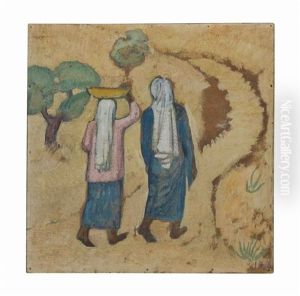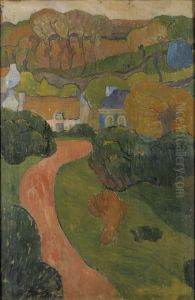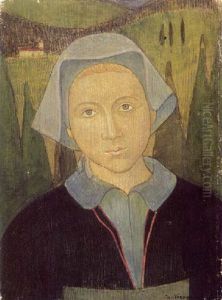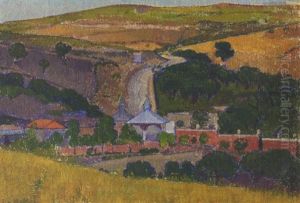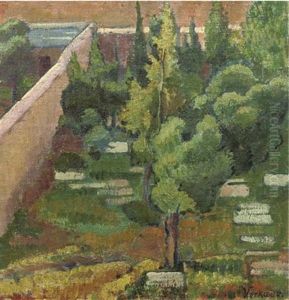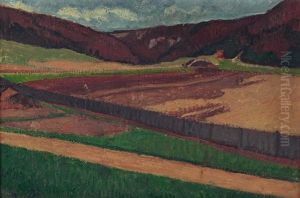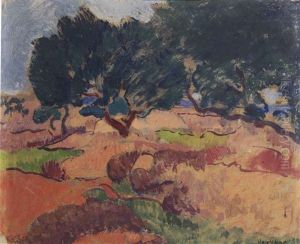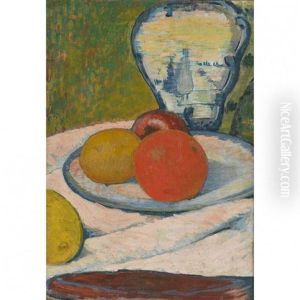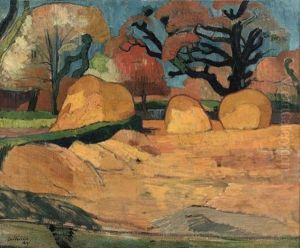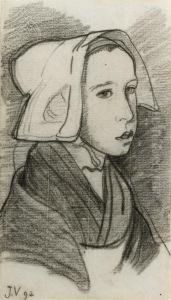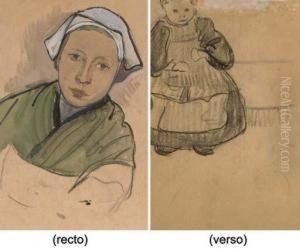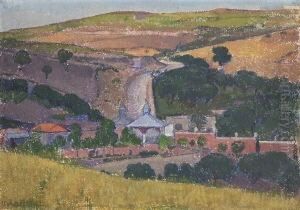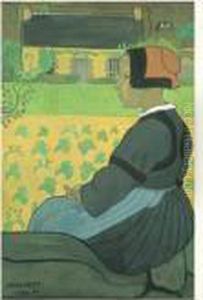Jan Verkade Paintings
Jan Verkade, born Johannes Sixtus Gerhardus Verkade on September 9, 1868, in Zaandam, Netherlands, was a Dutch Post-Impressionist and Symbolist painter. He was also known as Willibrord Verkade after becoming a Benedictine monk. Jan was the son of the industrialist Ericus Verkade, the founder of the famous Dutch company Verkade, which specialized in confectionery and bakery products.
Verkade initially began his artistic education at the Rijksakademie in Amsterdam. However, he later moved to Paris to further his studies, which was a turning point in his career and artistic development. In Paris, Verkade joined the artists' group known as Les Nabis, which included notable artists like Pierre Bonnard and Édouard Vuillard. Inspired by Paul Gauguin, the group was interested in creating art that was symbolic and spiritual, moving away from realistic representations.
During his early career, Verkade's work was marked by vibrant colors and the use of flat areas of color, typical of the Post-Impressionist style. His subjects often included landscapes, still lifes, and religious themes. However, in 1891, Verkade underwent a spiritual awakening that led to his conversion to Catholicism. His newfound faith had a profound influence on his work, and he began to focus more on religious subjects and symbolism.
In 1892, Verkade entered the Benedictine monastery of Beuron Archabbey in Germany, where he took the name Willibrord. Although he continued to paint, his style changed significantly under the influence of the Beuron Art School, which was part of the monastery. The Beuronese style was characterized by a strict and formal aesthetic, with an emphasis on geometric forms and a muted color palette, intending to create a sense of spiritual harmony and order. Verkade contributed to the decoration of several churches and monasteries in Europe, integrating his artistic skills with his religious vocation.
Over the years, Verkade traveled extensively throughout Europe, including Italy, where he was influenced by early Renaissance art. His later works continued to reflect his monastic life and his commitment to expressing his spirituality through art.
Jan Verkade's contribution to art is recognized for bridging the Post-Impressionist movement with Symbolist and religious art. His works are held in various collections and have been exhibited in museums dedicated to Symbolist and early modern art. Verkade continued to paint until his death on October 31, 1946, in the monastery of Monte Cassino, Italy, leaving behind a unique legacy that reflects his artistic journey from avant-garde experimentation to spiritual devotion.
